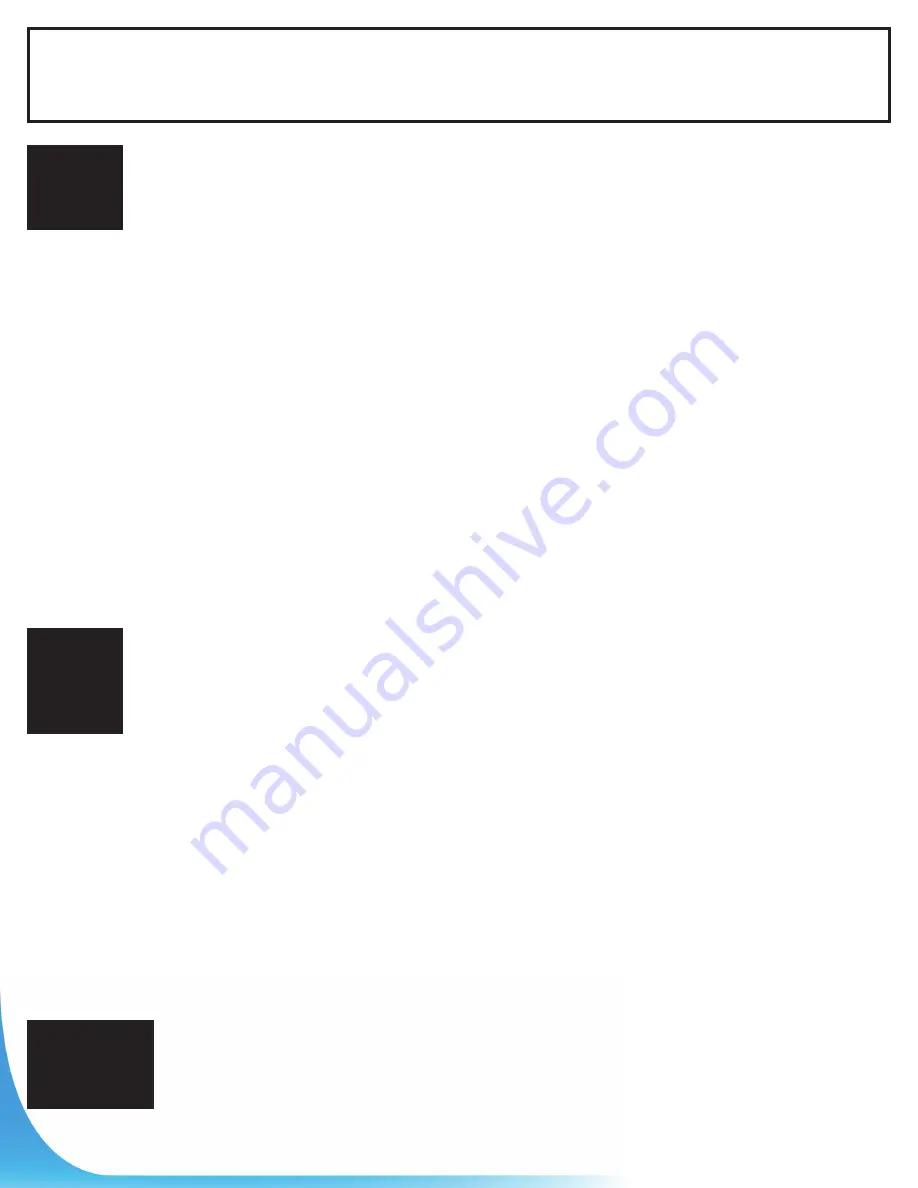
TANK INSTALLATION
SEE DIAGRAM ON PAGE 8
Packaged systems have the pump mounted directly to the tank. The pump to tank plumbing
fittings are pre-assembled at the factory. You only need to connect the discharge line of your
system to your home’s plumbing distribution line. When using a separate tank from your
pump, we recommend that you install a captive air tank as shown in our typical installation
diagram, that has been pre-charged with air pressure at the factory. This air, which is in
addition to atmospheric pressure, increases the ability of the tank to deliver more water
between on/off cycles, thus increasing the efficiency of your water system. Connect the
pump discharge to the tank T, using adaptors and braided hose, then, connect the other side
of tank T to your home’s plumbing distribution line.
Make sure that the precharged air pressure (before connecting the tank) is 2 PSI less
than the starting pressure as per the setting on the pressure switch of your pump.
If you adjust the air pressure after the installation, follow these steps:
- Check the starting pressure of the pump on the pressure gauge;
- Disconnect the power to the pump;
- Open nearest faucet to the tank and relieve all pressure in tank, then close
the faucet;
- Adjust the air pressure of the tank (by pumping or removing air at the snifter valve)
2 PSI below pressure switch “ON” setting;
- Turn power back on to pump.
Your tank is now properly precharged. Run the pump through a few cycles to verify that it
works properly.
Other types of tanks may be used, including galvanized standard tanks, epoxy or glass lined
tanks. These products do not achieve the benefits of the captive air tanks.
Epoxy or glass lined tanks with a float have to be precharged by the installer. Assuming the
tank is plumbed to pump and all connections are checked for leaks, follow these steps:
- Run pump through one complete cycle, until pump shuts off;
- Disconnect the power to the pump;
- Open nearest faucet to the tank and relieve all pressure in the tank, then close
the faucet;
- Close service line gate valve;
- With a car tire pump, inject air into the snifter valve located in the tank. Watch the
pump pressure gauge and stop pumping air when the pressure reaches 2 PSI below
the pressure switch “ON” setting;
- Reconnect the power to the pump;
- Run the pump through one complete cycle;
- Open service line gate valve.
Your tank is now properly precharged. Run the pump through a few cycles to verify that it
works properly.
Galvanized standard tanks require an air volume control to be used with a jet pump. We do
not recommend the installation of this type of tank with your jet pump. This type of galvanized
tank is recommended for use with piston pumps.
STEP 8
for captive
air tanks
STEP 8
for epoxy or
glass lined
tanks
Not
recommended
for galvanized
tanks
5




























